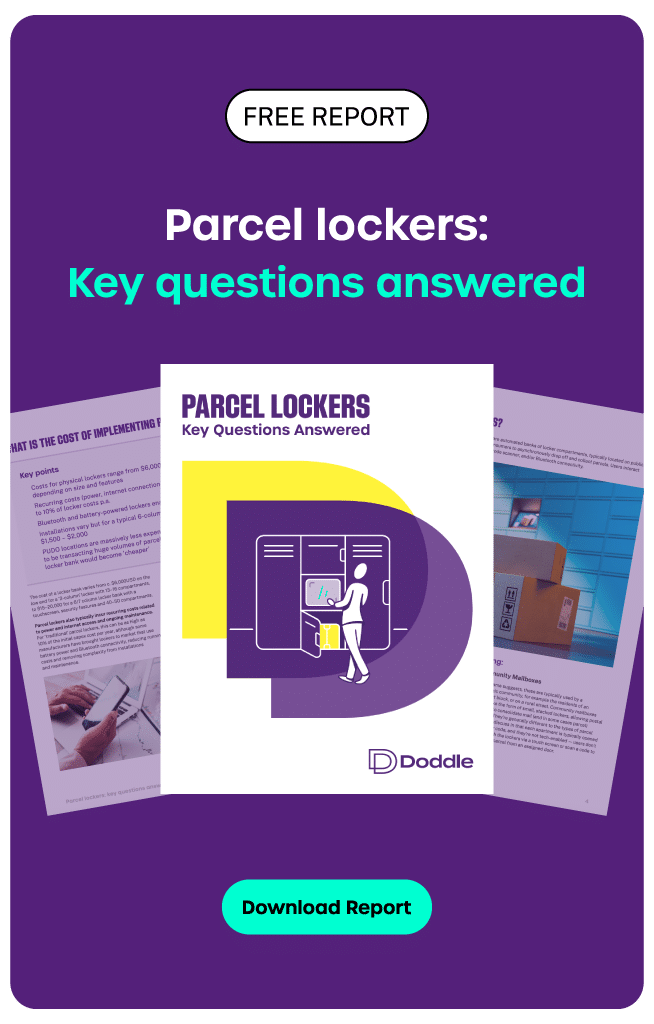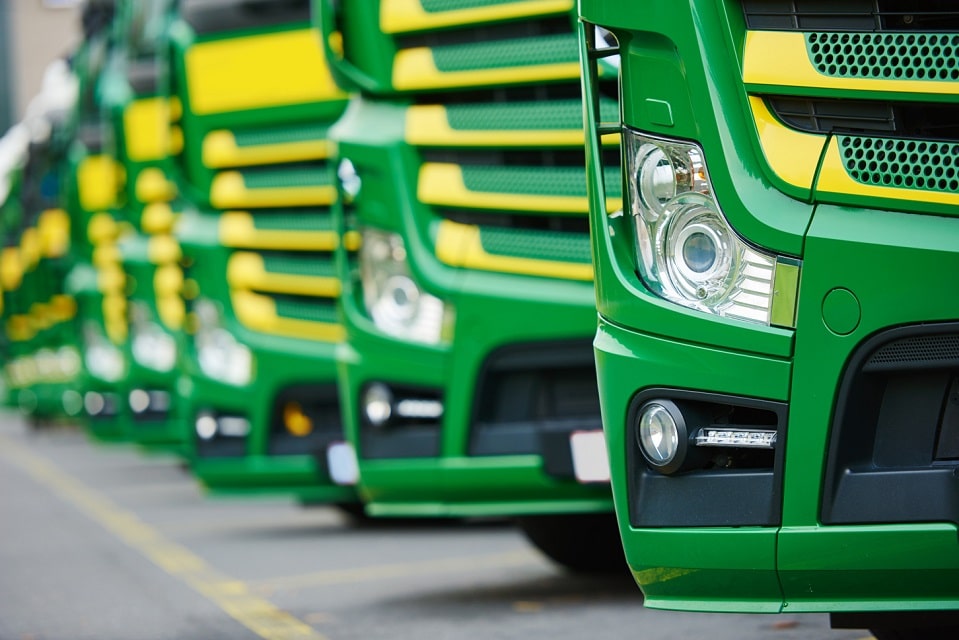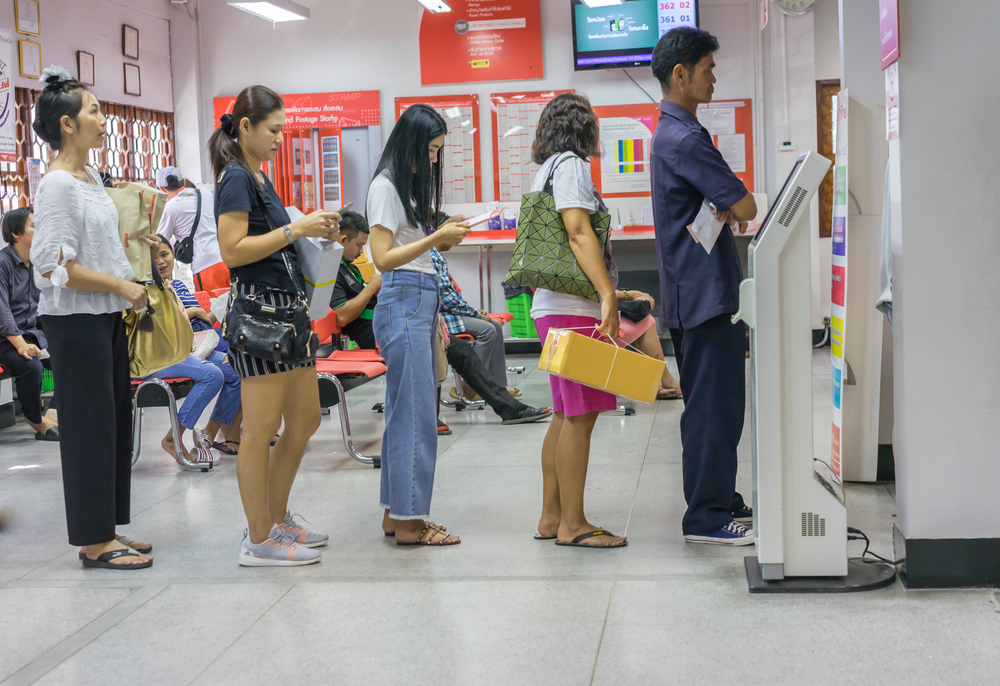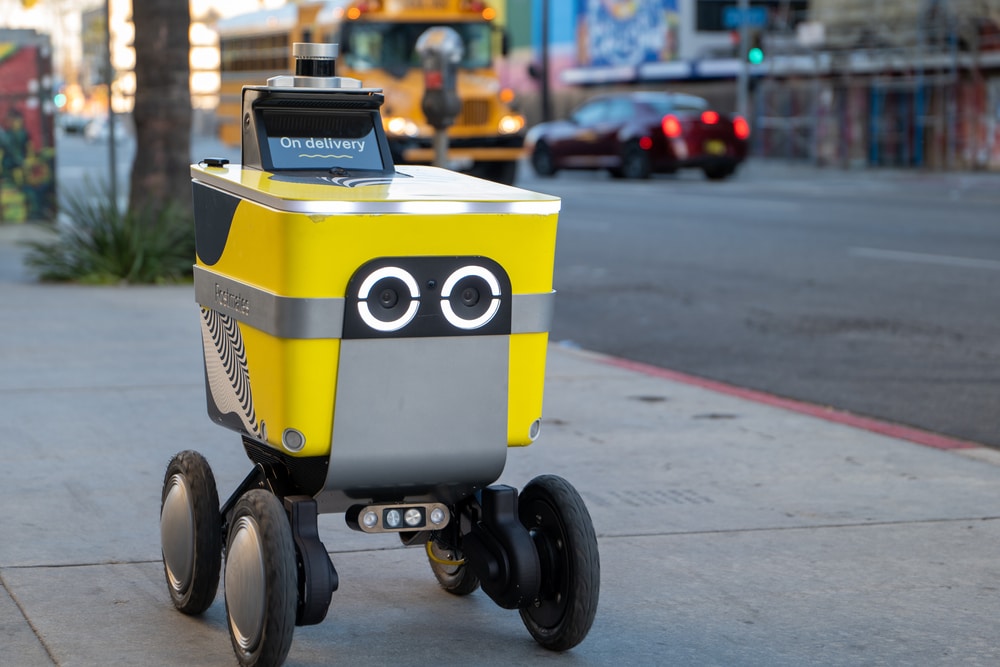Insight / Blog
Convenient and sustainable: developing an out-of-home delivery strategy
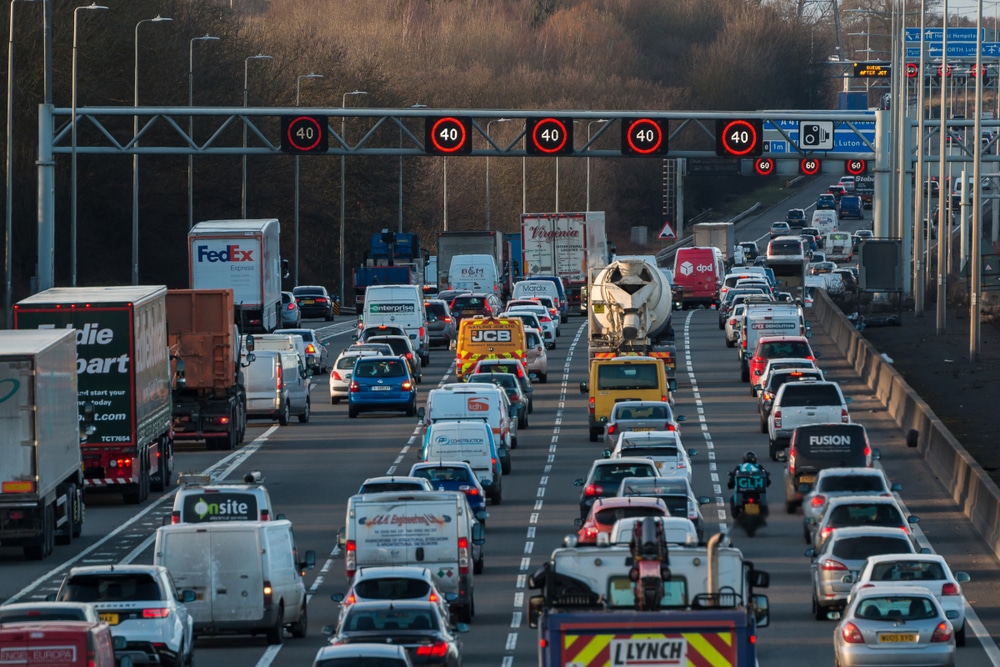
Summary: Sustainability has become a key decision factor for retailers - here's how carriers can stay ahead with an out-of-home delivery strategy that’s both sustainable and convenient for consumers
This article is adapted from a presentation given at Leaders in Logistics Summit in Copenhagen. Click here to watch the talk in full.
Last mile sustainability is getting worse, not better. While carbon emissions per parcel are creeping downwards for many carriers thanks to their good work, the increase in parcel volume overwhelms the positive impact of any increased carbon efficiency. As the Pitney Bowes parcel shipping index 2023 reports, global parcel volume has increased 150% in the last 7 years, from 64b parcels in 2016 to 161b in 2022.
Currently, parcel volume growth inevitably leads to higher emissions. In a home-delivery-first model, increased parcel volumes translate directly into more miles being driven. More miles being driven means more emissions.
Sustainability has become a key decision factor for retailers when choosing a logistics partner. In a competitive logistics market, it is no longer enough for carriers to set and publicise “Net Carbon Neutral” targets for decades in the future. They must make changes now and demonstrate progress with quantifiable data to remain ahead.
Simon Thompson, Chief Executive Officer at Royal Mail, put it best: “Environment is the next battleground for businesses”. If sustainability isn’t in your arsenal, you will be left behind on the battlefield.
So, how can carriers develop an out-of-home delivery strategy that’s both sustainable and convenient for consumers?
The (electric) road so far…
There’s already a lot of ambition to decarbonise transport and parcel delivery.
However, much focus in this area tends to go towards electrification. Although this initiative will help carriers reach net zero targets, it’s not the sustainability cure-all for carriers.
The timeline to fully electric fleets remains long-term, and there’s a huge carbon cost to creating and deploying these new vehicles, plus additional electricity consumption does still have a carbon cost associated with it, thanks to the nature of most national power grids.
Electrification is a long-term goal. But if carriers want to be truly sustainable, they need to cut down the number of miles driven and encourage greater consolidation of deliveries.
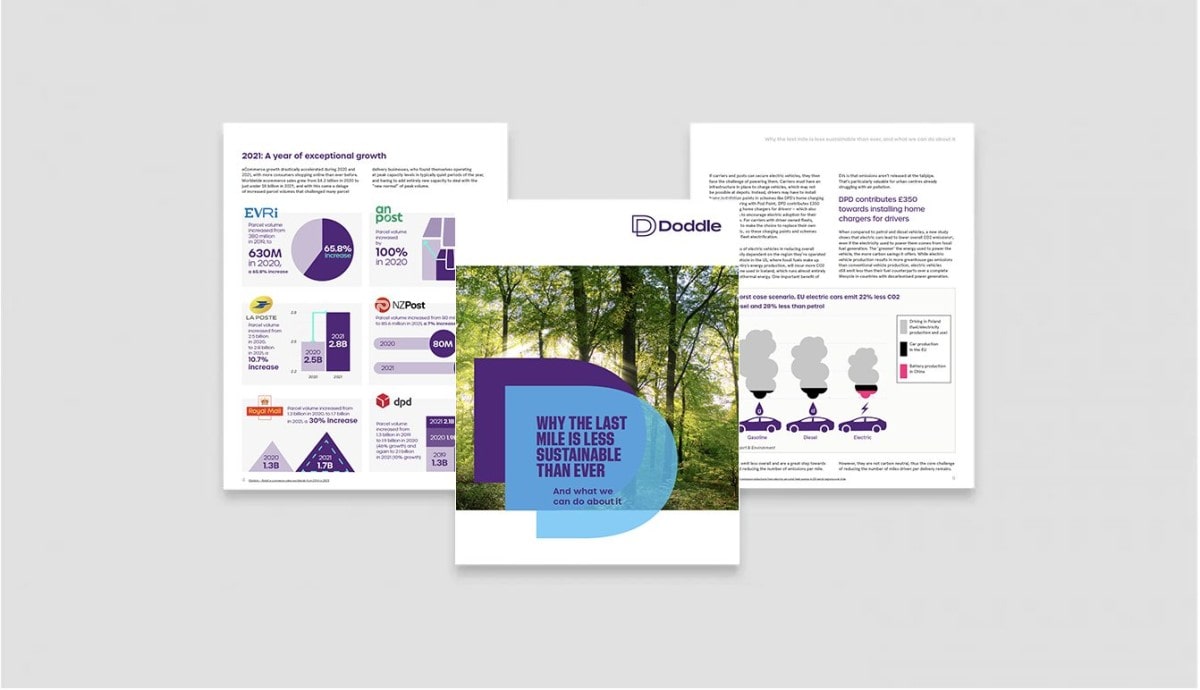
Using current delivery options to reduce miles per delivery
The easiest and lowest-cost solution most carriers have at their disposal is to increase the share of parcels being delivered into their existing OOH network, consolidating deliveries and reducing emissions.
By increasing the number of parcels delivered at single locations, and reducing the proportion of failed deliveries, OOH deliveries significantly reduce the number of miles drivers need to cover to deliver the same volume of parcels.
InPost CEO Rafał Brzoska says that an average delivery driver manages to drop 70-80 parcels per shift, where an InPost driver can achieve 1,000 parcels delivered. DHL ran a simulation where using their Service Points, drivers delivered the same volume of parcels having driven 38% of the distance as home delivery drop-offs would have required. “The average parcel home-delivery driver will maybe deliver 70-80 parcels during a daily shift… ours will do 1,000 parcels a day.”
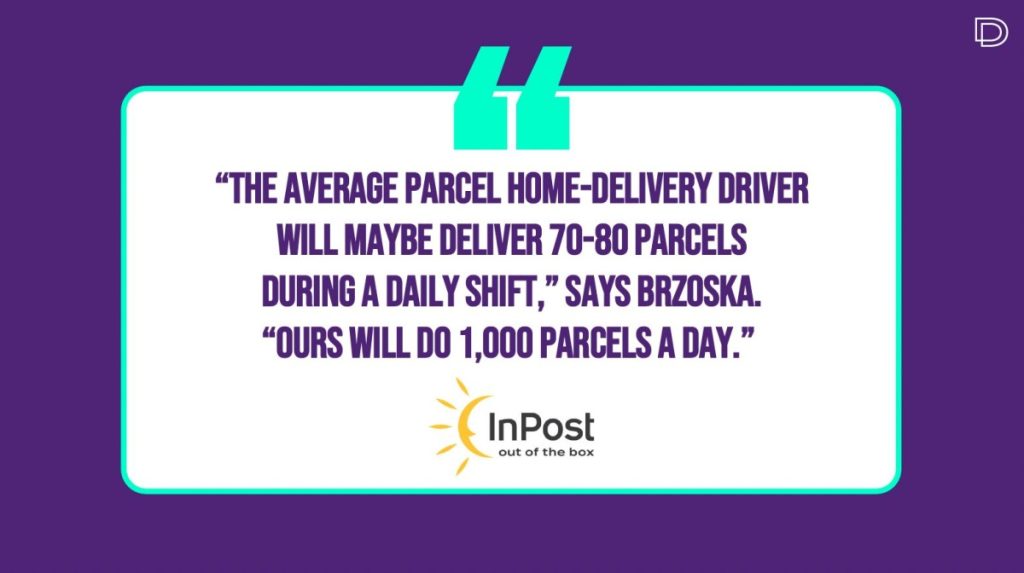
It is important to mention that how consumers use the out-of-home network is fundamental to its sustainability success. Data from a nationwide study of Belgian pickup point usage gives great insight into when OOH is truly beneficial for emissions reduction.
In short, if customers drive to the pickup point, especially as a journey they wouldn’t otherwise make, out-of-home delivery is less sustainable than home delivery – delivery drivers are using carefully planned routes and delivering many parcels on that route, so have a higher parcels per km rate than a customer picking up one or two items from a pickup point. However, the majority of the time, this is not how pickup points were used in the study – a clear majority of consumers trip-chained or used low-emissions transport methods or both, resulting in massive emissions reductions versus home delivery.
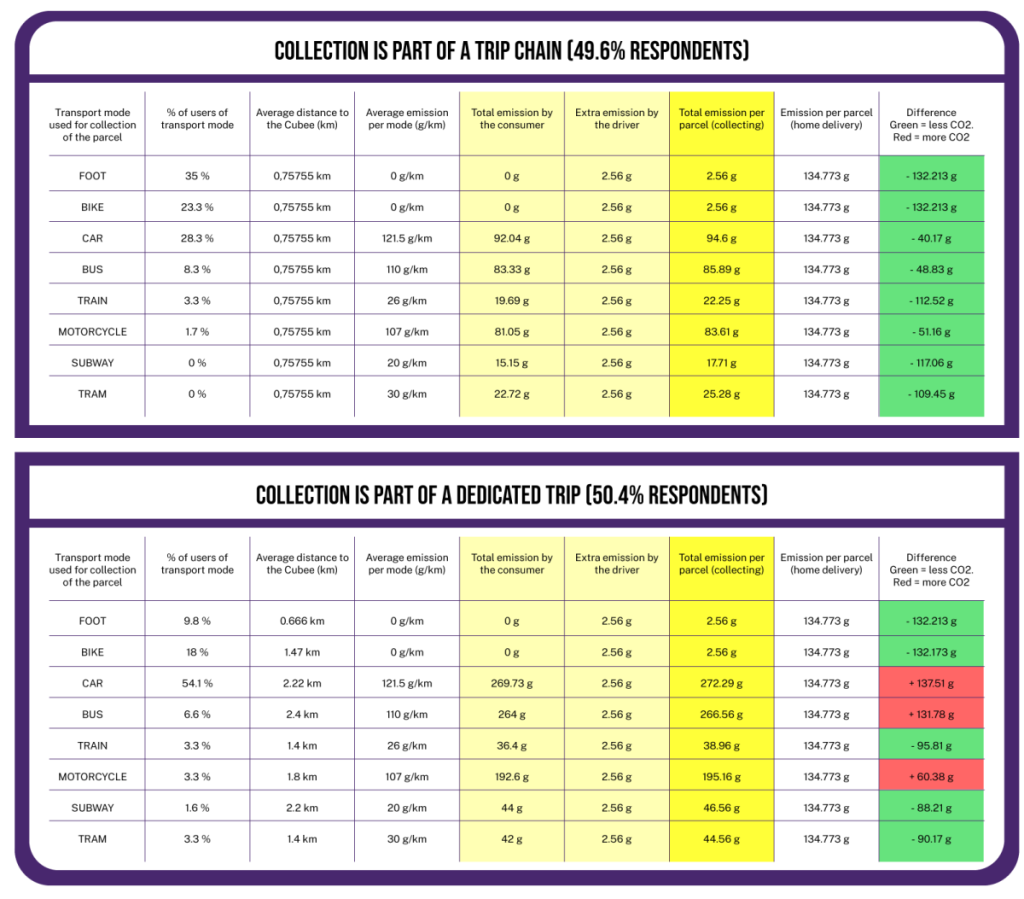
Driving more volume into existing OOH networks
Although the size, coverage and density will vary, many carriers already have OOH networks in place that they can utilise to build a sustainable delivery strategy. What remains is to increase the volume going through these networks.
What do OOH networks look like in the UK?
Changing consumer behaviour from home delivery to OOH is no easy task, particularly as home delivery is a deeply ingrained habit. OOH delivery does offer consumers a range of benefits, including greater convenience and control over how parcels are collected, and frees them from being “trapped” at home waiting for deliveries or suffering the frustration of missing a parcel. In addition, NPS data we’ve witnessed from multiple Posts and logistics providers indicates that delivery to a parcel locker is often the delivery option that leaves customers happiest, and the method they would most likely recommend to a friend, beating home delivery on NPS.
However, it’s up to carriers to get the behavioural change ball rolling by the benefits of OOH delivery.
One of the first methods to encourage change and drive OOH parcel volume is to ensure that OOH delivery options are available on every retailer checkout. Consumers cannot select OOH delivery options if they do not know they are there. To achieve this, carriers need to develop a checkout integration that removes the hurdle of manufacturing solutions for each retailer, allowing them to present OOH options at the front and centre of each checkout. For example, the Doddle checkout integration includes downloadable ecommerce plugins for Shopify or Magento which can be live in less than a day, as well as lightweight JavaScript widgets and API integrations which pull your location data into existing map solutions for enterprise retailers.
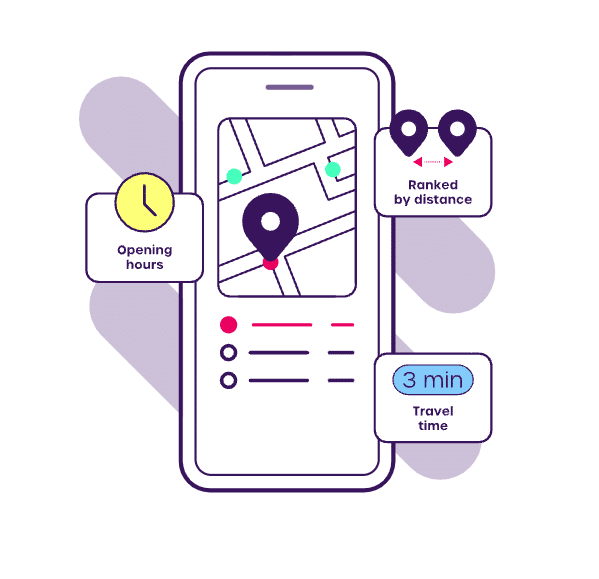
Doddle research has shown that merchants that include OOH at checkout enjoy a range of benefits, including an increase in conversion rate, an increase in average order value, and improved NPS.
Carriers also need to use their own marketing channels to raise awareness and incentivise customers to use OOH options, such as:
-
Using localised emails to consumers near OOH points to direct them to that collection point
-
Promote OOH messaging on missed delivery slips, telling consumers that they can remove this negative delivery experience by using the OOH delivery points
-
Using promotions to push first-time usage, such as Amazon’s offer of money off orders for the first collection using lockers
Once consumers have used OOH once and witnessed the benefits for themselves, they will be much more likely to use it again in the future.
3 actions for a convenient and sustainable out of home strategy
Creating an OOH delivery strategy that is both convenient and sustainable won’t just help secure partnerships with retailers, but also increase delivery efficiency, reduce costs and help to protect margins. That is a win-win situation that carriers can no longer afford to ignore.
And it can be achieved with 3 simple actions:
-
Continue investment in out-of-home delivery networks
-
Drive volume through OOH networks
-
Collect and display sustainability data as a key selling point
When this data is in place, they can analyse their routing and measure GHG emissions saved through OOH deliveries. Combining both sets of data gives the most accurate picture of OOH sustainability. It allows carriers to start promoting OOH delivery with sustainability messaging that is compelling for consumers and useful for merchants keen to offer measurably sustainable delivery options at the checkout.
Overall, increasing the proportion of deliveries happening through OOH networks will enable carriers to deliver the same volumes in fewer miles driven, which directly reduces GHG emissions and buys time for initiatives like electrification to become more realistic widespread options for green delivery.
Ready to develop your OOH strategy?
We help carriers develop out-of-home networks and strategies to achieve greater sustainability and reduce delivery cost.
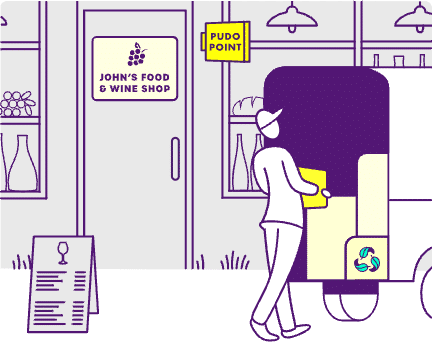
Related articles
5 Changes We Predict in eCommerce Delivery & Returns in 2024
Our predictions for 2024 in ecommerce delivery and returns, plus a roundup of our 2023 predictions.
4 ways that C2C commerce is transforming the last mile
As consumers adopt recommerce, out-of-home networks are having to adapt to increased demand.
The evolution of automation in the last mile and its weird and wonderful future
When you look back at the past, weird & wonderful predictions of automation in the last mile become less absurd and more believable.









